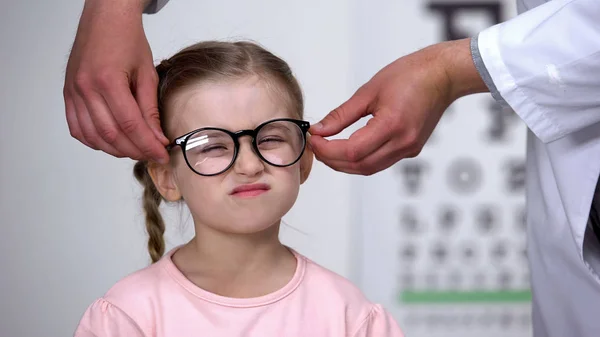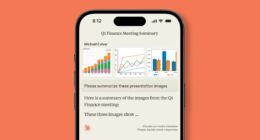A look at “Detecting Eye Diseases Early” The gift of sight is a wondrous treasure, especially in the realm of childhood. As children embark on their journey of discovery, their eyes play a pivotal role in shaping their understanding of the world. However, the vulnerability of young eyes to various ailments underscores the importance of vigilance in detecting eye diseases early. In this comprehensive guide, we will explore the critical art of early detection and delve into 10 prevalent eye problems in children, along with their solutions.
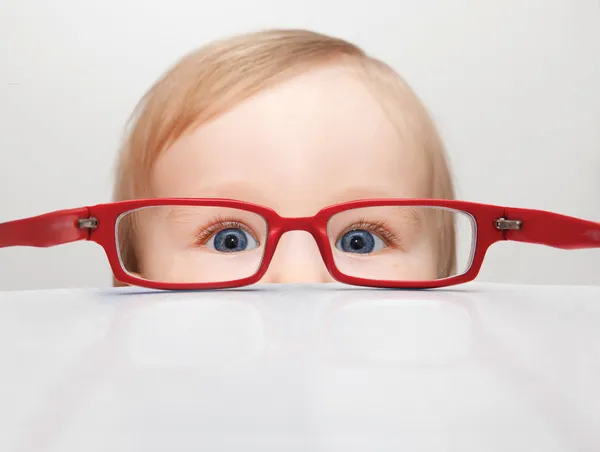
Table of Contents
- 1 What Expert Says
- 2 Expert Lists 10 Eye Problems In Children And Their Solutions
- 3 1. Amblyopia (Lazy Eye)
- 4 2. Strabismus (Crossed Eyes)
- 5 3. Refractive Errors
- 6 4. Ptosis (Drooping Eyelid)
- 7 5. Conjunctivitis (Pink Eye)
- 8 6. Blocked Tear Ducts
- 9 7. Color Vision Deficiency (Color Blindness)
- 10 8. Retinoblastoma
- 11 9. Corneal Infections
- 12 10. Retinopathy of Prematurity (ROP)
- 13 Conclusion
What Expert Says
Dr Rishi Raj Borah, County Director – India, Orbis, says that early detection and treatment of eye problems in children is essential for avoiding lifelong vision problems.
He recommends that parents look for any changes in their child’s vision, eye movements, or eye appearance, and take them for regular eye exams. Early detection and treatment of eye diseases can help to ensure that your child has healthy vision throughout their life.
What I think
I agree with Dr Borah that early detection and treatment of eye problems in children is essential for avoiding lifelong vision problems. Children’s eyes are still developing, so it is important to identify and treat any problems early on.
Parents can play a vital role in early detection by being aware of the signs and symptoms of common eye problems in children. If you notice anything unusual, be sure to talk to your child’s pediatrician or an eye doctor.
Regular eye exams are also important for early detection of eye problems. The American Academy of Ophthalmology recommends that all children have their first eye exam at 6 months of age, followed by another exam at 3 years of age and then every two years thereafter.
If your child is diagnosed with an eye problem, it is important to work with their eye doctor to develop a treatment plan. Treatment may include glasses, contact lenses, eye exercises, or surgery.
Expert Lists 10 Eye Problems In Children And Their Solutions
The human eye, with its intricate design and remarkable precision, is a masterpiece of nature. In children, the development of a healthy vision is a cornerstone of their growth and education. Yet, eye disorders can stealthily creep into a child’s life, often unnoticed until they escalate. Early detection is the linchpin of successful intervention. Let us embark on a journey through the world of pediatric eye health, unraveling the signs, symptoms, and remedies for a diverse array of ocular conditions.
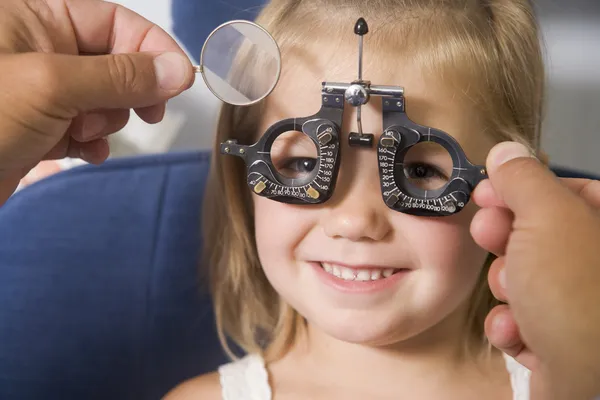
Early detection and treatment of eye problems in children is essential for avoiding lifelong vision problems. Here are 10 common eye problems in children and their solutions, as listed by Dr Rishi Raj Borah, County Director – India, Orbis:
1. Amblyopia (Lazy Eye)
Amblyopia, colloquially known as “lazy eye,” conceals its presence with subtlety. It occurs when one eye fails to achieve normal visual acuity and remains underdeveloped. The absence of apparent symptoms makes early detection crucial, usually before the age of 7.
Solution: Treatment revolves around patching the stronger eye to stimulate the weaker one’s development. Vision therapy and prescription eyeglasses are additional measures that may be prescribed.
2. Strabismus (Crossed Eyes)
Strabismus, characterized by the misalignment of the eyes, can manifest in various forms—eyes turning in, out, up, or down. Apart from aesthetics, this condition disrupts binocular vision and may cause discomfort.
Solution: Management of strabismus may encompass eye exercises, specialized eyewear, or, in severe instances, corrective surgery to realign ocular muscles.
3. Refractive Errors
Refractive errors, including nearsightedness (myopia), farsightedness (hyperopia), and astigmatism, cast a veil of blur upon the world. These conditions blur the distinction between distant and close objects, leading to visual discomfort.
Solution: The prescription of corrective eyeglasses or contact lenses is the prevailing remedy. Regular eye examinations are indispensable to monitor shifts in refractive status.
4. Ptosis (Drooping Eyelid)
Ptosis, the sagging of one or both eyelids, can be congenital or acquired. It not only affects aesthetics but may hinder the visual field, impeding daily activities.
Solution: Surgical intervention is often required to lift the drooping eyelid, ameliorating both function and appearance.
5. Conjunctivitis (Pink Eye)
Conjunctivitis, an inflammation of the conjunctiva, may be triggered by infections, allergies, or irritants. It manifests as redness, itching, and discharge.
Solution: Treatment hinges on the underlying cause. Antibiotic eye drops or ointments combat bacterial conjunctivitis, while antihistamines or artificial tears alleviate symptoms in allergic cases.
6. Blocked Tear Ducts
Blocked tear ducts, leading to excessive tearing and eye discharge, often plague infants. These obstructions may either resolve naturally or necessitate medical intervention.
Solution: Gentle massaging of the tear ducts and the application of warm compresses can facilitate obstruction clearance. Surgical correction becomes an option in severe scenarios.
7. Color Vision Deficiency (Color Blindness)
Color vision deficiency, commonly known as color blindness, can complicate color perception, making it challenging to differentiate specific hues.
Solution: While no cure exists for color vision deficiency, practical strategies such as color-coding and adaptive aids empower children to adapt to their unique visual perception.
8. Retinoblastoma
Retinoblastoma, a rare but severe eye cancer, primarily targets young children. Swift detection is paramount for a favorable prognosis.
Solution: The arsenal against retinoblastoma encompasses chemotherapy, radiation therapy, or, in severe cases, enucleation (removal of the affected eye). Early identification offers the best chance of survival.
9. Corneal Infections
Corneal infections, often stemming from injury or bacterial intrusion, trigger pain, redness, and photophobia (sensitivity to light).
Solution: Immediate medical attention is mandatory in cases of corneal infections. Treatment may involve antibiotic eye drops, ointments, or, in extreme scenarios, surgical intervention.
10. Retinopathy of Prematurity (ROP)
Retinopathy of Prematurity (ROP), a disorder exclusive to premature infants, poses the risk of visual impairment or blindness if left untreated.
Solution: Neonatal ophthalmologists vigilantly monitor preterm infants for ROP and may recommend laser therapy or surgery to avert sight-threatening complications.
Here are some tips to detect eye diseases early
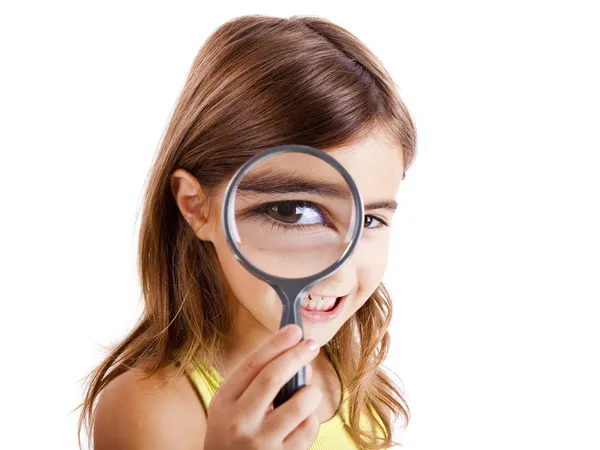
There are a number of things that parents can do to detect eye diseases early in their children:
- Look for any changes in your child’s vision. This can include things like squinting, closing one eye, or having trouble seeing things at a distance or up close.
- Pay attention to your child’s eye movements. If your child’s eyes are not aligned properly or if they have trouble moving their eyes together, this could be a sign of an eye problem.
- Look for any changes in your child’s eyes. This can include things like redness, swelling, or discharge.
- Take your child for regular eye exams. The American Academy of Ophthalmology recommends that all children have their first eye exam at 6 months of age, followed by another exam at 3 years of age, and then every two years thereafter.
If you are concerned about your child’s eye health, be sure to talk to their pediatrician or an eye doctor. Early detection and treatment of eye diseases can help to ensure that your child has healthy vision throughout their life.
Conclusion
In summation, the ability to decipher the intricacies of how to detect eye diseases early in children stands as a sentinel of their visual well-being and overall development. Consistent ocular examinations and unwavering parental watchfulness together constitute the cornerstone of identifying potential ocular maladies. Timely intervention and appropriate therapeutic measures hold the promise of a brighter tomorrow for countless young eyes.
Each child, a universe unto themselves, merits the utmost care and attention regarding their ocular health. Should any suspicion of visual irregularity or anomalies arise, do not hesitate to seek consultation with a pediatric ophthalmologist. Through awareness and proactive involvement, we pave the way for children to embark on their journey of discovery with the clarity and confidence that their eyesight affords.
You may also like | 11 Best Exercises for Men to Get a Lean Waistline
